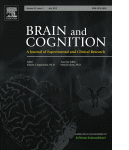Musical groove modulates motor cortex excitability: A TMS investigation
Groove is often described as a musical quality that can induce movement in a listener. This study examines the effects of listening to groove music on corticospinal excitability. Musicians and non-musicians listened to high-groove music, low-groove music, and spectrally matched noise, while receiving single-pulse transcranial magnetic stimulation (TMS) over the primary motor cortex either on-beat or off-beat. We examined changes in the amplitude of the motor-evoked potentials (MEPs), recorded from hand and arm muscles, as an index of activity within the motor system. Musicians and non-musicians rated groove similarly. MEP results showed that high-groove music modulated corticospinal excitability, whereas no difference occurred between low-groove music and noise. More specifically, musicians’ MEPs were larger with high-groove than low-groove music, and this effect was especially pronounced for on-beat compared to off-beat pulses. These results indicate that high-groove music increasingly engages the motor system, and the temporal modulation of corticospinal excitability with the beat could stem from tight auditory–motor links in musicians. Conversely, non-musicians’ MEPs were smaller for high-groove than low-groove music, and there was no effect of on- versus off-beat pulses, potentially stemming from suppression of overt movement. In sum, high-groove music engages the motor system, and previous training modulates how listening to music with a strong groove activates the motor system.



